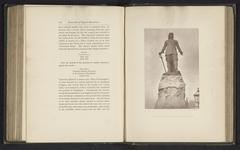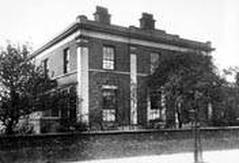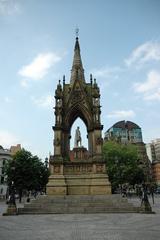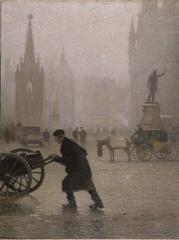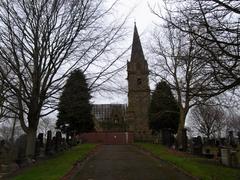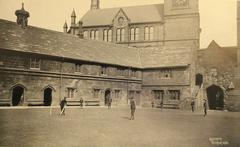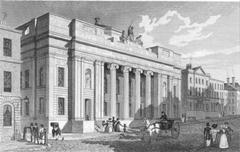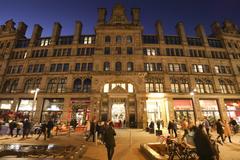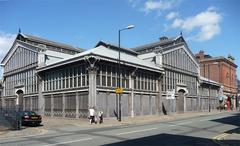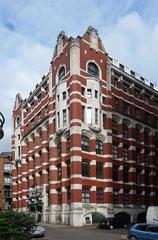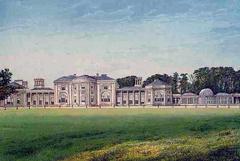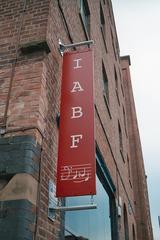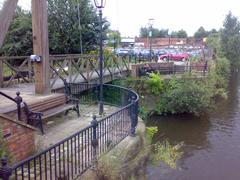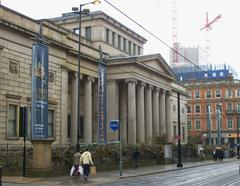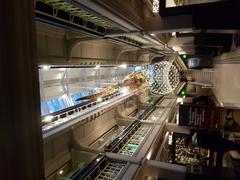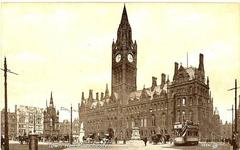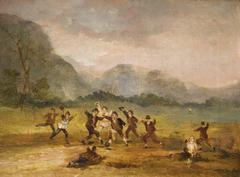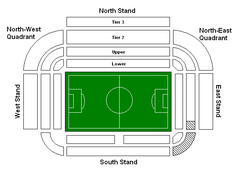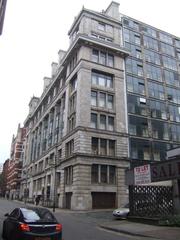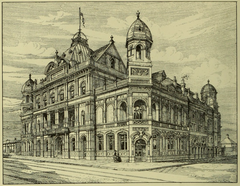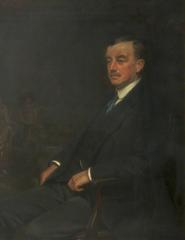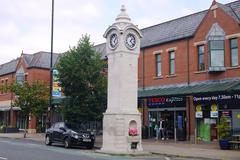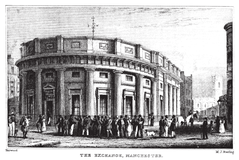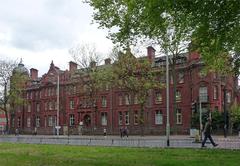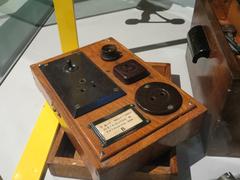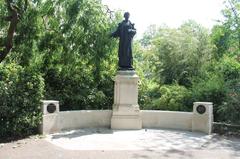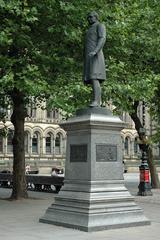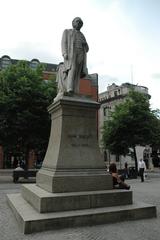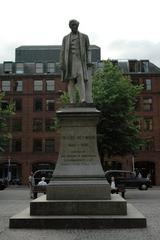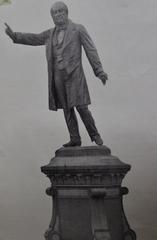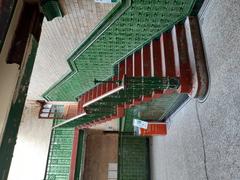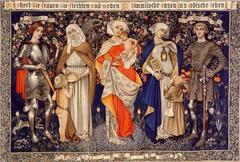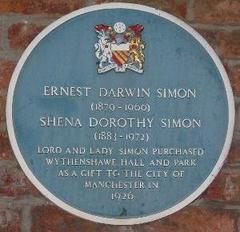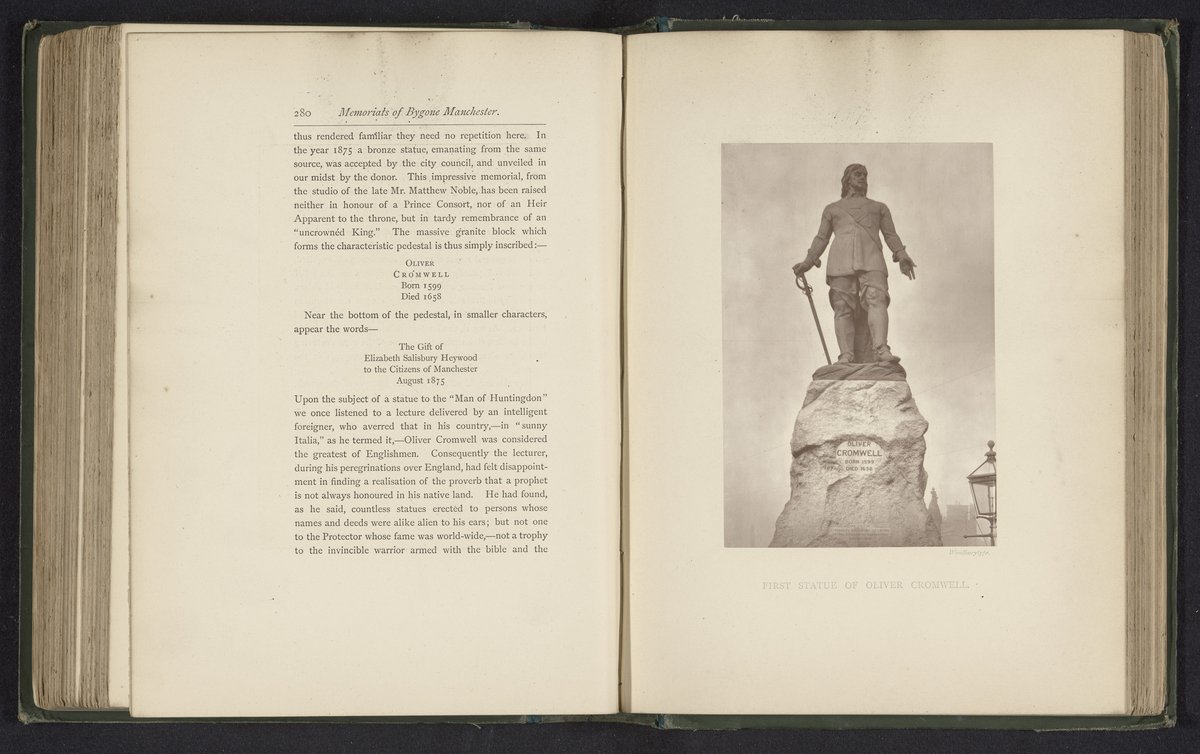
Statue of Oliver Cromwell Manchester: Visiting Hours, History & Travel Tips
Introduction
The Statue of Oliver Cromwell in Manchester stands as a striking monument to one of Britain’s most debated historical figures. Located in Wythenshawe Park, this bronze statue by Matthew Noble, unveiled in 1875, encapsulates Manchester’s tradition of political reform, religious nonconformity, and civic pride. Cromwell’s legacy, marked by his role as Lord Protector during the English Civil War, continues to inspire discussion and reflection. This guide offers comprehensive information about visiting the statue—covering its history, opening hours, access, practical tips, and its place in Manchester’s heritage landscape.
Location and Access
The statue is located in Wythenshawe Park, on the southern edge of Manchester. It stands near Wythenshawe Hall, itself a notable Civil War site. The park is easily accessible:
- By tram: Wythenshawe Park Metrolink stop (Manchester Metrolink network).
- By bus: Several routes connect the park to central Manchester.
- By car: On-site parking is available within the park grounds.
Wythenshawe Park is open daily from dawn until dusk, and entry to both the park and the statue is free of charge (Manchester City Council).
Visiting Hours and Tickets
- Visiting Hours: Dawn to dusk, year-round.
- Admission: Free; no tickets are required.
- [Guided Tours: There are no regular guided tours solely for the statue, but local history events and tours occasionally include it. Check with Visit Manchester or local historical societies for updates.](#guided-tours:-there-are-no-regular-guided-tours-solely-for-the-statue,-but-local-history-events-and-tours-occasionally-include-it.-check-with-visit-manchester-or-local-historical-societies-for-updates.)
The Statue: Artistic and Historical Details
Sculpted by Matthew Noble and unveiled in 1875, the Oliver Cromwell statue was the first major outdoor monument to Cromwell in the UK (Manchester Hive). The statue shows Cromwell in full military attire, holding a Bible in one hand (representing faith) and a sword in the other (representing military authority). The design draws inspiration from Sir Peter Lely’s famous portrait, though the statue notably features a full moustache, a detail discussed by historians (Manchester Evening News).
The statue stands atop a granite plinth and pedestal, reaching approximately 30 feet in height, making Cromwell an imposing figure in the landscape. The inscription simply reads “Oliver Cromwell 1599–1658,” reflecting a restrained, dignified approach characteristic of Noble’s style (Public Monuments and Sculpture Association).
Historical Context and Significance
The statue commemorates Manchester’s alignment with the Parliamentarian cause during the English Civil War. Originally located on Deansgate outside Manchester Cathedral, its placement was a statement of the city’s radical and reformist values (Chetham’s Library). The statue was gifted by Elizabeth Heywood, widow of Mayor Thomas Goadsby, and was celebrated by liberal and Nonconformist communities.
From the outset, the statue was controversial. Many in Manchester’s Irish community, and even Queen Victoria herself, objected to its presence due to Cromwell’s actions in Ireland and his involvement in the execution of King Charles I (Manchester Evening News). In the late 1960s, urban redevelopment led to its relocation to Wythenshawe Park—a site with its own Civil War history, as Wythenshawe Hall was besieged by Parliamentarian forces in 1643.
Controversy and Public Memory
The Cromwell statue is a focal point for debates over historical memory, commemoration, and public art. Supporters view Cromwell as a champion of parliamentary democracy and religious liberty, while critics, especially those with Irish heritage, remember him as a military dictator responsible for atrocities in Ireland (Chetham’s Library). The statue has been subject to protests and vandalism, including during the 2020 Black Lives Matter movement, when it was spray-painted with slogans referencing Cromwell’s legacy (Metro).
Despite controversy, Manchester City Council has chosen to keep the statue in place, emphasizing the importance of education and context over removal (Manchester City Council Heritage).
Visiting Experience and Surroundings
Wythenshawe Park offers a tranquil setting for contemplation and exploration. In addition to the statue, visitors can enjoy:
- Wythenshawe Hall: Open on select days with exhibitions on local history and the Civil War.
- Gardens and woodlands: Ideal for walks, photography, and picnics.
- Community farm, café, play areas, and sports facilities: Making the park a destination for all ages.
- Interpretive resources: While on-site signage is limited, online resources and guidebooks can enhance your visit.
The statue is accessible, with level paths suitable for wheelchairs and strollers.
Tips for Visitors
- Best Time to Visit: Spring and summer offer pleasant weather and blooming gardens.
- Photography: The best natural light is in the early morning or late afternoon.
- Accessibility: The park and statue are accessible for wheelchairs and strollers.
- Behavior: Be mindful of the statue’s complex history and diverse community sentiments.
- Facilities: Restrooms, café, and picnic areas are available nearby.
- Combine your visit: Explore Wythenshawe Hall, the community farm, or other park attractions.
Frequently Asked Questions (FAQ)
Q: Is there an admission fee to see the Statue of Oliver Cromwell?
A: No, admission to Wythenshawe Park and the statue is completely free.
Q: What are the visiting hours?
A: The park is open daily from dawn until dusk.
Q: Are guided tours available?
A: There are no regular tours for the statue, but Wythenshawe Hall and local groups sometimes offer Civil War-themed events.
Q: Is the site wheelchair accessible?
A: Yes, paths to and around the statue are wheelchair and stroller friendly.
Q: Can I take photographs?
A: Yes, photography is encouraged, especially during golden hour.
The Statue in Manchester’s Heritage
The Cromwell statue is part of Manchester’s broader collection of monuments that reflect the city’s progressive and sometimes contested history. It stands alongside memorials to figures such as Abraham Lincoln and Mahatma Gandhi, each representing different facets of Manchester’s identity (Chetham’s Library; I Love Manchester).
Practical Information at a Glance
- Location: Wythenshawe Park, Wythenshawe Road, Manchester, M23 0AB
- Transport: Tram (Wythenshawe Park Metrolink), bus, and car (on-site parking)
- Opening Hours: Daily, dawn to dusk
- Admission: Free
- Facilities: Café, toilets, picnic areas, children’s play area, walking/cycling paths
- Accessibility: Wheelchair and stroller-friendly
- Nearby: Wythenshawe Hall, community farm, gardens
For the latest updates, visit the Manchester City Council website.
Enhance Your Visit
- Media: Use high-quality images with alt text like “Statue of Oliver Cromwell in Wythenshawe Park, Manchester.”
- Maps: Reference interactive maps to locate the statue within the park.
- Internal Links: Explore other Manchester monuments (e.g., Abraham Lincoln statue) and historical sites to deepen your experience.
Summary: Key Points for Visitors
The Statue of Oliver Cromwell in Manchester is a powerful symbol of the city’s reformist spirit and contested memory. Its accessible location in Wythenshawe Park, surrounded by amenities and historical sites, makes it an essential stop for anyone interested in British history or public art. The city’s approach to the statue—contextualizing rather than removing—encourages ongoing dialogue about the complexities of history and commemoration (Manchester City Council Heritage; Chetham’s Library). Modern resources, such as the Audiala app, offer digital enhancements for a richer visitor experience.
Official Sources & Further Reading
- Manchester City Council: Oliver Cromwell Statue
- Historic England: Listing Entry for Oliver Cromwell Statue
- Manchester Evening News: Cromwell Statue History
- Manchester Hive: Historical Background
- Visit Manchester: Visitor Information
- Art UK: Cromwell Statue Artwork
- Chetham’s Library: A Tale of Two Statues
- Metro: Cromwell Statue Vandalism
- Manchester City Council Heritage
- I Love Manchester: Sculptures and Statues
- Public Monuments and Sculpture Association
